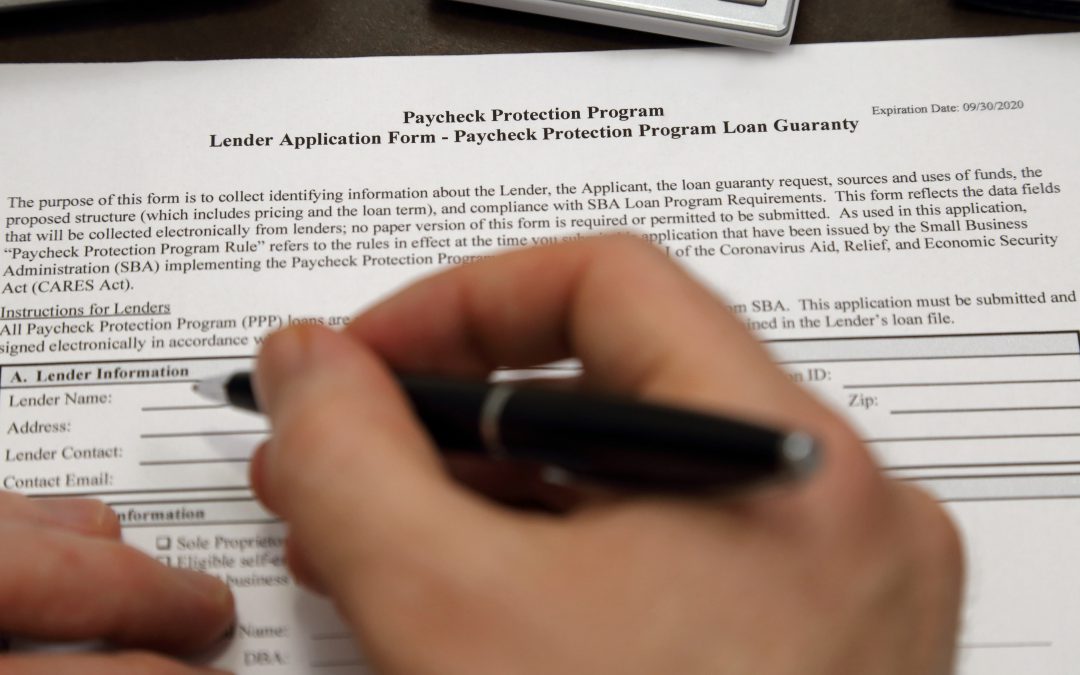On May 15, 2020, the Small Business Administration (SBA), in consultation with the Treasury, issued a press release announcing the release of the Paycheck Protection Program (PPP) Loan Forgiveness Application.
The application includes significant changes to the tracking and calculation of loan forgiveness that drastically reduce the administrative burden for borrowers while allowing the ability to increase qualifying costs. Below is a link to the application.
https://home.treasury.gov/system/files/136/3245-0407-SBA-Form-3508-PPP-Forgiveness-Application.pdf
Alternative Payroll Covered Period
Previously issued regulations stated that the covered period MUST begin on the date of which the loan proceeds are disbursed. The newly released application offers borrowers with a biweekly (or more frequent) payroll cycle the option of using an alternative payroll covered period. These borrowers may elect to calculate payroll costs using the eight-week (56-day) period that begins on the first day of the first pay period following the PPP loan disbursement date. The SBA provides the example that if a borrower “received its PPP loan proceeds on Monday, April 20, and the first day of its first pay period following its PPP loan disbursement is Sunday, April 26, the first day of the Alternative Payroll Covered Period is April 26 and the last day of the Alternative Payroll Covered Period is Saturday, June 20” It is important to note that this alternative period is specific to payroll costs ONLY.
Incurred and Paid Becomes Incurred OR Paid
The application simplifies the much debated “incurred AND paid” guidelines from the CARES Act.
Specific to payroll costs, any costs incurred but not paid during the borrower’s last pay period of the Covered Period (or Alternative Payroll Covered Period) are eligible for forgiveness if paid on or before the next regular payroll date.
For other non-payroll costs, including mortgage interest, rent obligations, and utilities, these costs must be EITHER paid during the eight-week covered period OR incurred during the eight-week covered period, and paid on or before the next regular billing date (even if after the end of the eight-week covered period).
Full-time Equivalent (FTE) Employee Calculation
Consistent with previous guidance, a reduction in forgiveness exists if the average weekly FTEs during the eight-week covered period is lower than the lower of the average weekly FTEs during the period of EITHER February 15, 2019 through June 30, 2019 OR January 1, 2020 through February 29, 2020.
Unclear prior to this release was how the SBA would define an FTE. The new guidance instructs borrowers to calculate FTEs by entering the average number of hours paid per week per employee, divide by 40, and round the total to the nearest tenth. The maximum for each employee is capped at 1.0. For example, an employee who works 30 hours in a week would be treated as 0.8 in that week. This contradicts the Affordable Care Act methodology which was the expected methodology that would be applied prior to this release.
Reduction in Wages
The application clarifies that reductions in wages in excess of 25% MUST be analyzed separately by each employee. Using salary for salaried employees or hourly wage for hourly employees, the calculation compares the average ANNUALIZED salary or hourly wage by employee during the eight-week covered period and compares it to the average ANNUALIZED salary or hourly wage during the period from January 1, 2020 through March 31, 2020. If the average during the eight-week period is less than 75% of the average during the previous quarter, a reduction applies.
Safe Harbor for Reduction in FTEs or Wages in Excess of 25%
Consistent with previous regulations, safe harbors remain in place that provide exemptions for the reductions in FTEs and the reduction in wages in excess of 25% as discussed above. The loan application clarifies how to determine if the safe harbor is met AND provides additional ways to meet the safe harbor requirements.
Consistent with previous regulations, the application states that reductions in FTEs in the period beginning February 15, 2020 and ending April 26, 2020 that are restored no later than June 30, 2020 (back to the level as of February 15, 2020) will not result in reduction in forgiveness.
As additional guidance beyond the CARES Act, the application adds additional exceptions in which FTE reductions do NOT reduce loan forgiveness. These include (1) any positions for which the Borrower made a good-faith written offer to rehire an employee during the Covered Period or the Alternative Payroll Covered Period which was rejected by the employee; and (2) any employees who were fired for cause, voluntarily resigned, or voluntarily requested and received a reduction of their hours during the Covered Period or the Alternative Payroll Covered Period.
If a reduction in wages in excess of 25% occurs for an employee, a safe harbor also exists if the borrower eliminates the reduction by June 30, 2020. This safe harbor describes that if the average annualized salary or hourly wage as of June 30, 2020 is equal to or greater than the annual salary or hourly wage as of February 15, 2020, the reduction will be deemed to have been eliminated and no reduction to forgiveness will apply.

